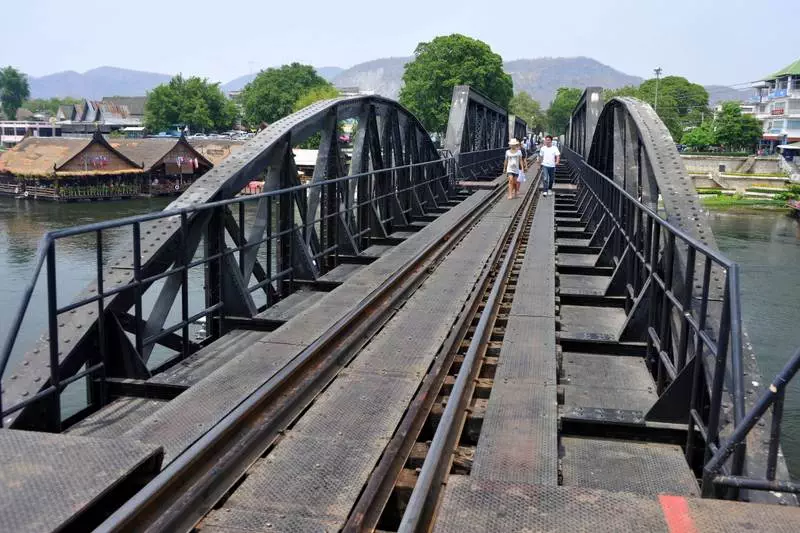
If you’re under the age of 40, there’s a fair chance you’ve heard of the movie or the book, but the chances are low you’ve actually seen it / read it. If you have seen The Bridge over the River Kwai , you can safely disregard it as a work of fiction — and the more of the history you learn, the less the book / movie and reality correlate. Pronounce it ‘quay’, which rhymes with ‘sway’ and not ‘why’. Any way you slice it, the mainstream tourist attraction offers up all the things you’d expect: optimistic tuk-tuk drivers, a few signs with some historical background, and a bizarre, fake war museum. There’s a few unexpected things around as well, which makes the area worth taking in.
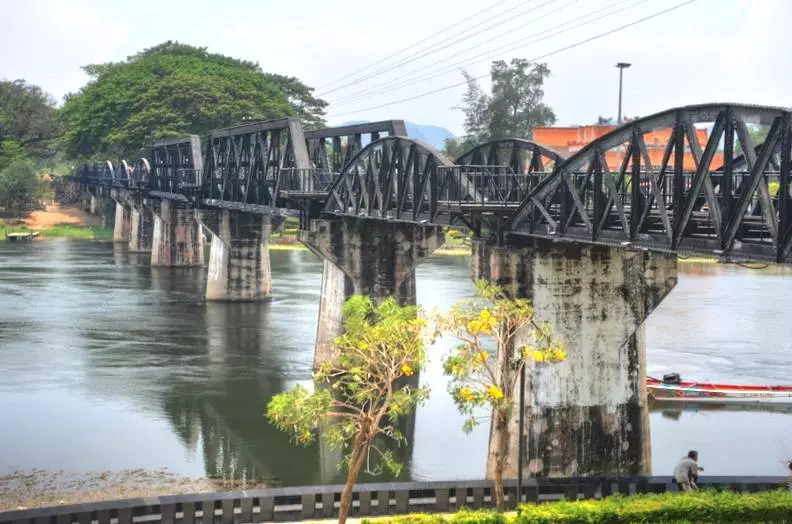
While you can cross the bridge on foot, go on — be a tourist! Cross via the rainbow-colored train:
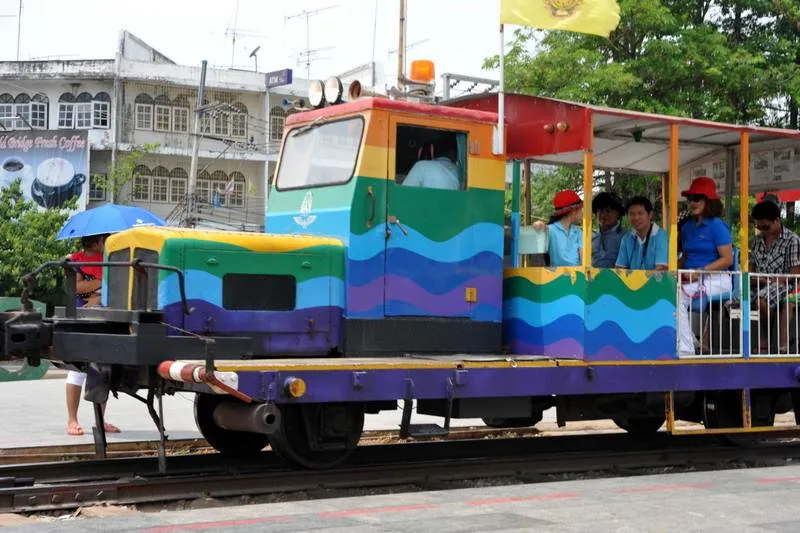
It makes enough trips across the bridge, but there are enough places to move to the side.
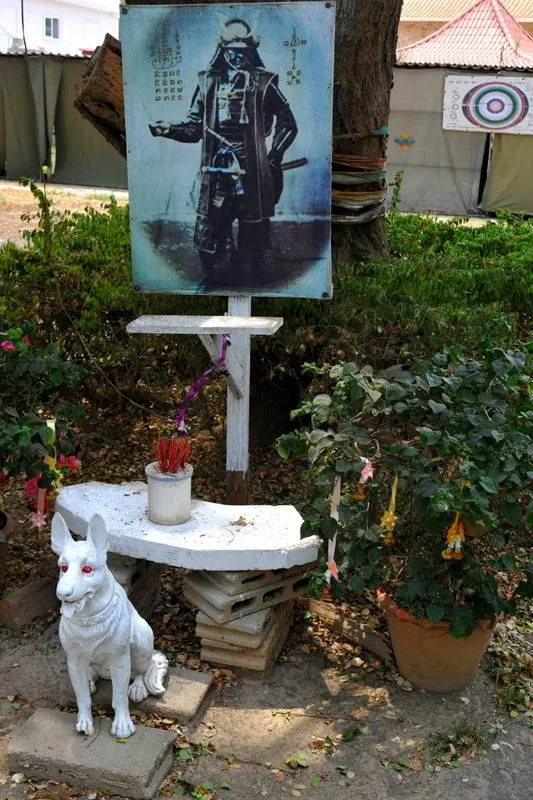
Um… you’ve got me here. It’s here on the other side of the river where the souvenirs are shaded, but the sellers are barely visible. The real highlight is the Kuang-Im chapel:
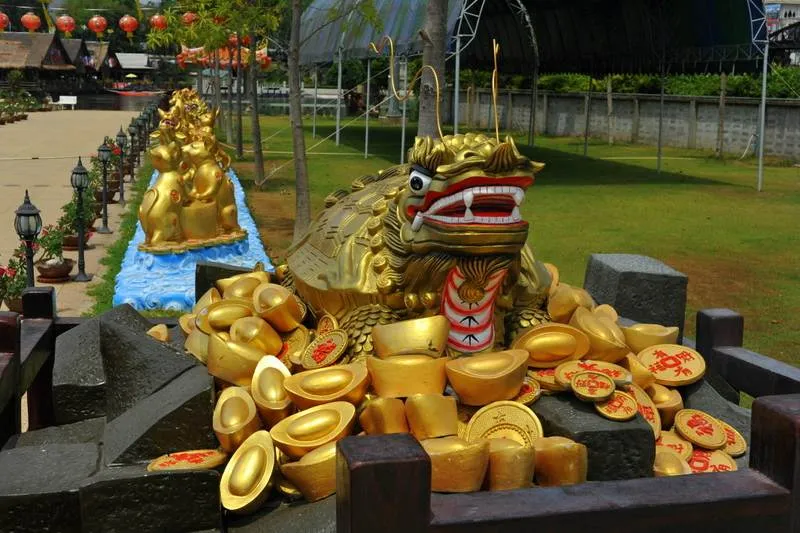
Coins! Plenty of other animals around, but I have no clue what’s happening here, or why this one’s surrounded by coins…
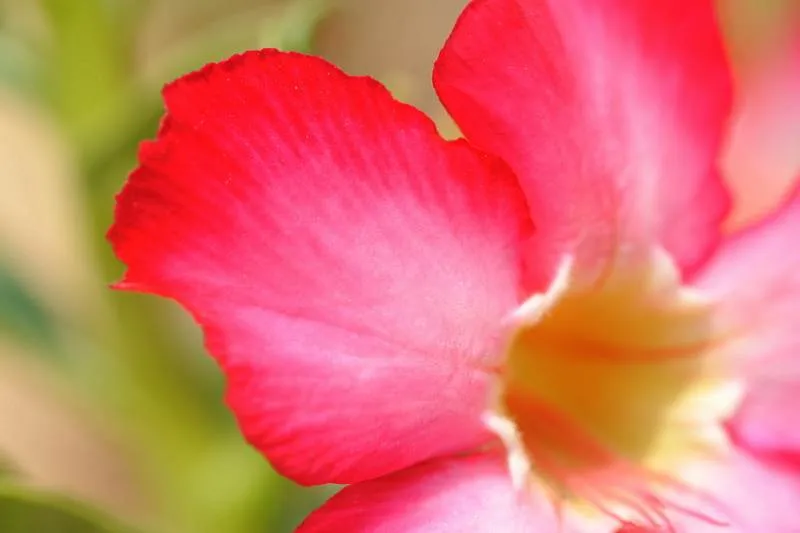
Because the macro lens wanted a turn to play…
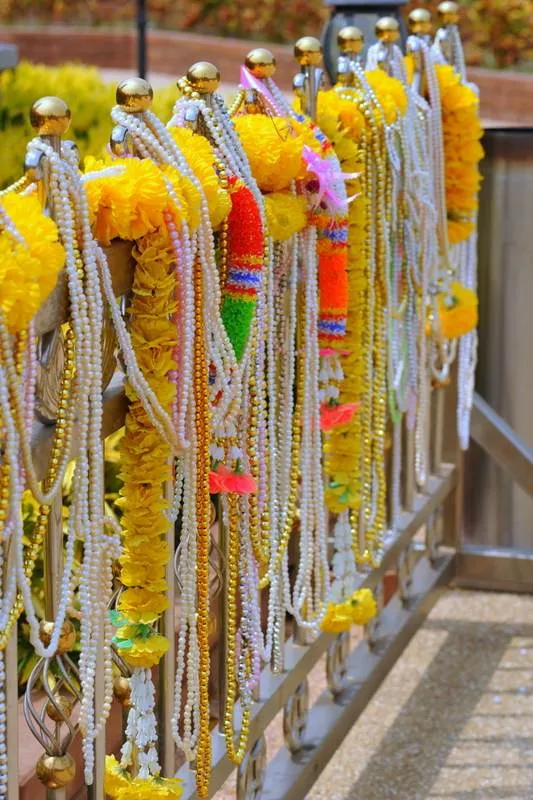
Plenty of offerings here.
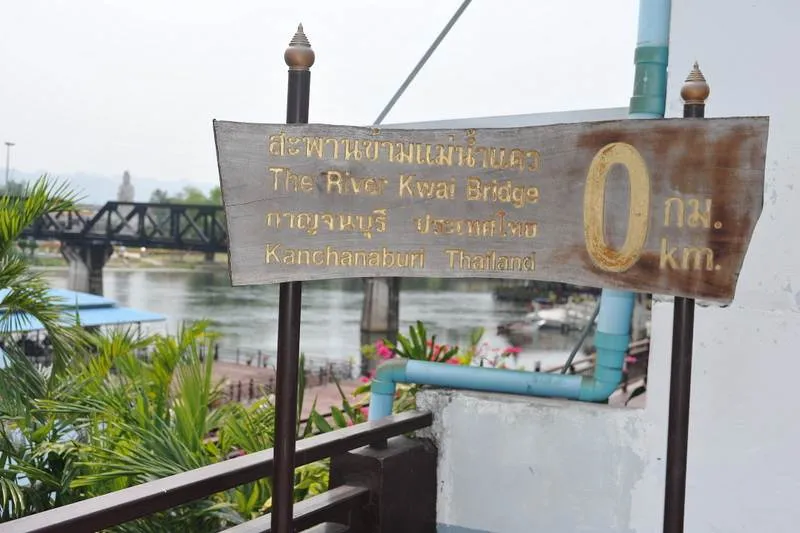
It’s good to know you’re 0 kilometers away from the bridge.
And now, for something bizarre…
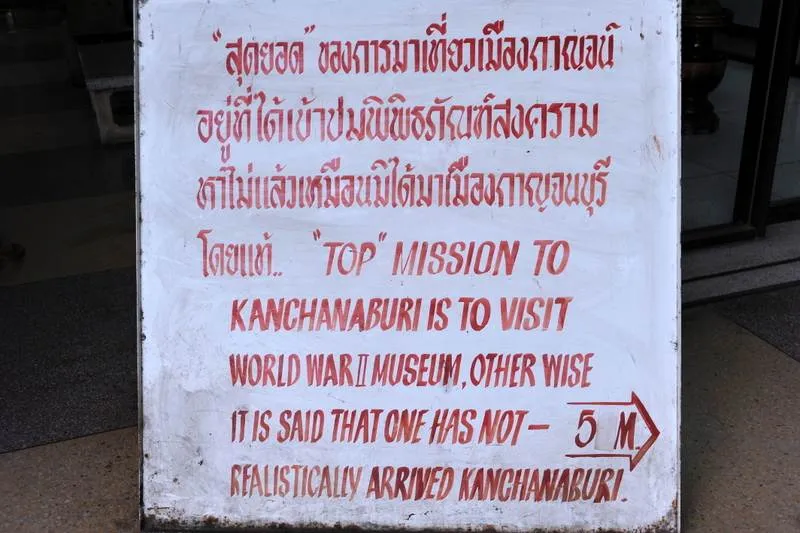
A stone’s throw away from the Bridge over the River Kwai, this World War II museum is simply the most bizarre war museum I’ve ever been to. The Rough Guides actually recommends against going because of its bizarreness… which is exactly why I wanted to go!
First things first, however: despite the signage and the claims, this is not the real JEATH war museum. That’s in a different part of Kanchanaburi, and is definitely worth visiting for its moving story and original exhibits. This JEATH warm museum is little more than a tourist grab, and the above sign mentions nothing about the organization of what’s inside.
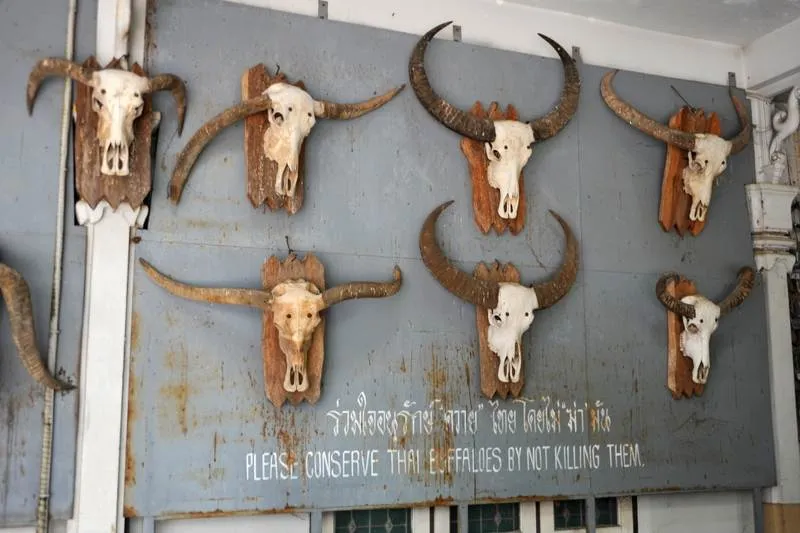
After the animal dies, buffalo skulls were kept to commemorate the beast of burden’s helpfulness to the family.
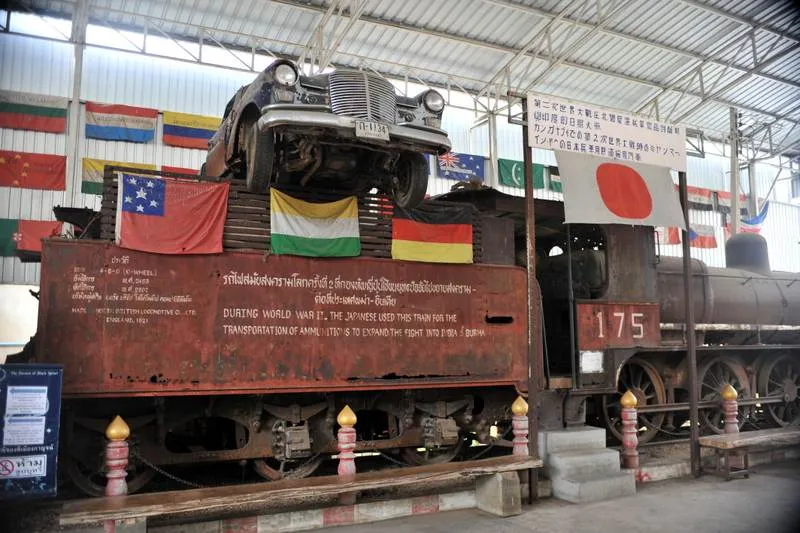
Poorly organized and in a condition that a curator would get fired for, this fake JEATH war museum once presented a plethora of information related to World War II. There are approximately 11 rooms, according to one sign, but much is scattered between the rooms, in the halls, and elsewhere on what might be called the museum grounds.
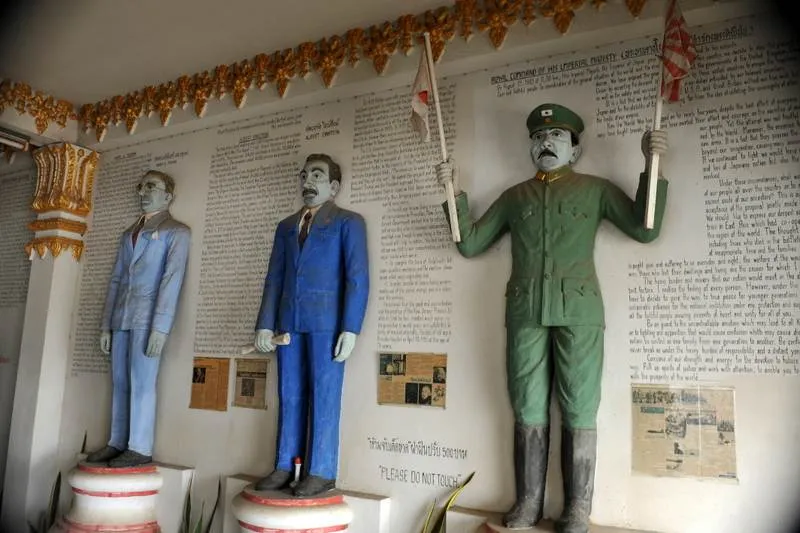
A neatly hand-written script retells the stories and histories of the war is nearby, seemingly copied out of a book. Also around are larger-than-life images of General Hideki Tojo and Benito Mussolini, in addition to President Truman, Albert Einstein, and Emperor Hirohito above.
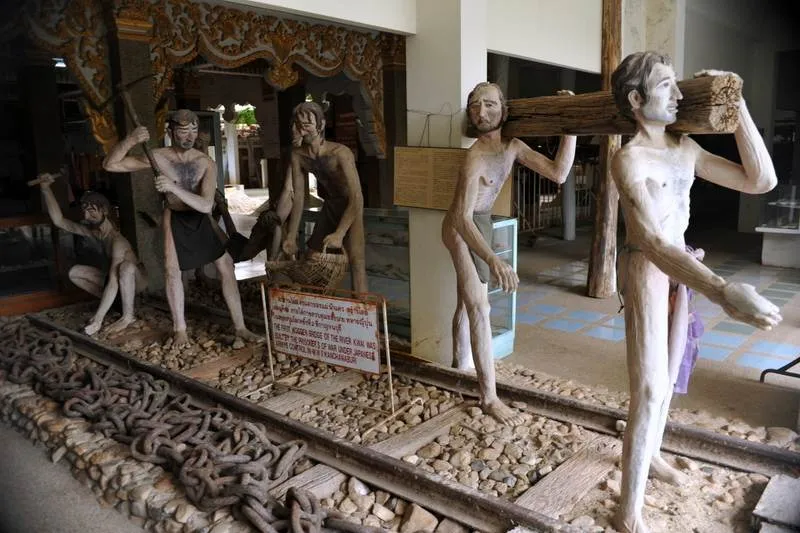
An interesting take on how the first wooden bridge was built by POW’s… Somehow I doubt they wore loincloths…
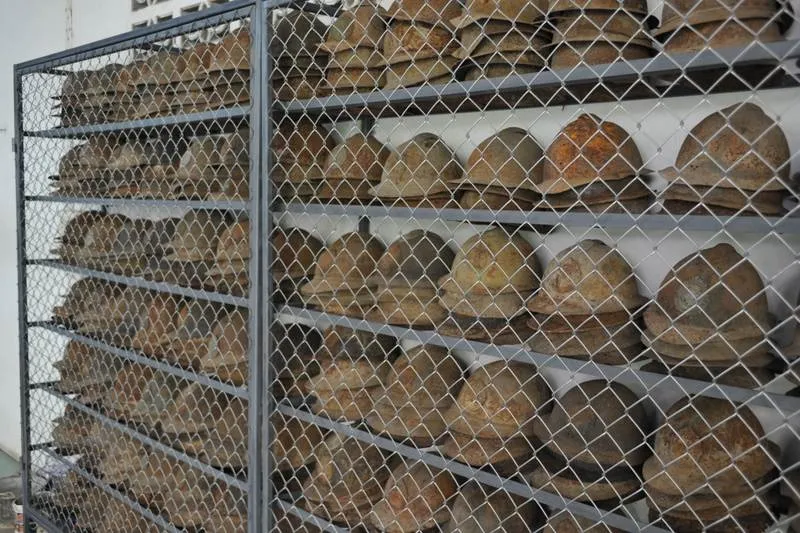
This place really has to be taken with a grain of salt, so take a few moments to reflect — or look up the real history — while enjoying the rocking chairs (not pictured). The helmets (as seen above) and the ordinance in front of you is just a fraction of what’s been recovered from the area, supposedly.
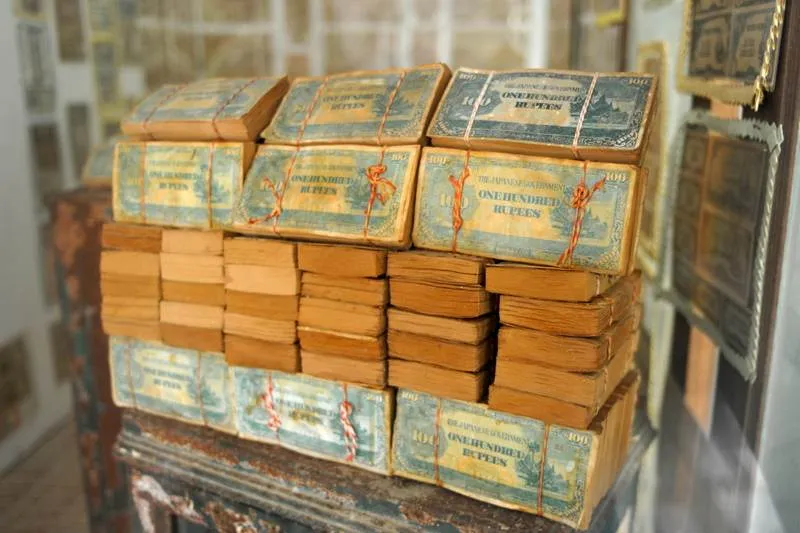
A whole bunch of Japanese rupees.
It’s about here where you begin to realize how deep the rabbit hole goes:
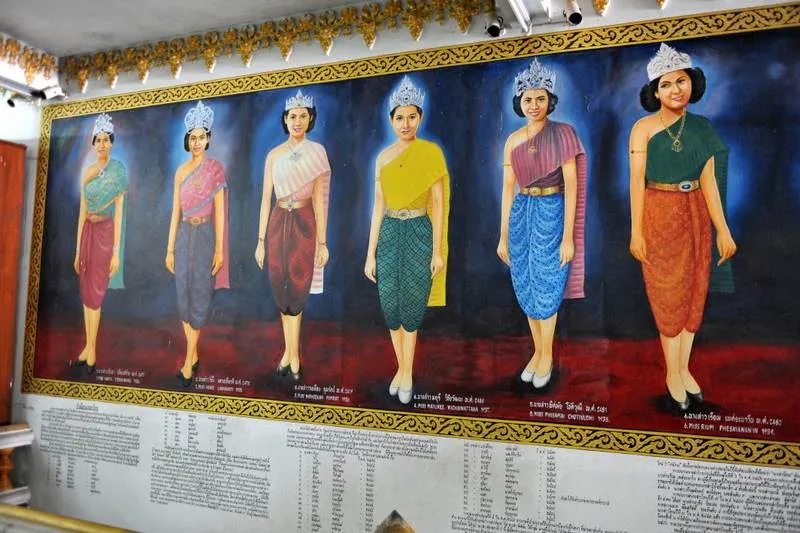
Presenting some of the former Miss Thailand’s (called the ‘Miss Thailand Directory’ in the museum). First held in 1934 with long evening dresses and Thai costumes, the bathing suit competition didn’t come into play until later.
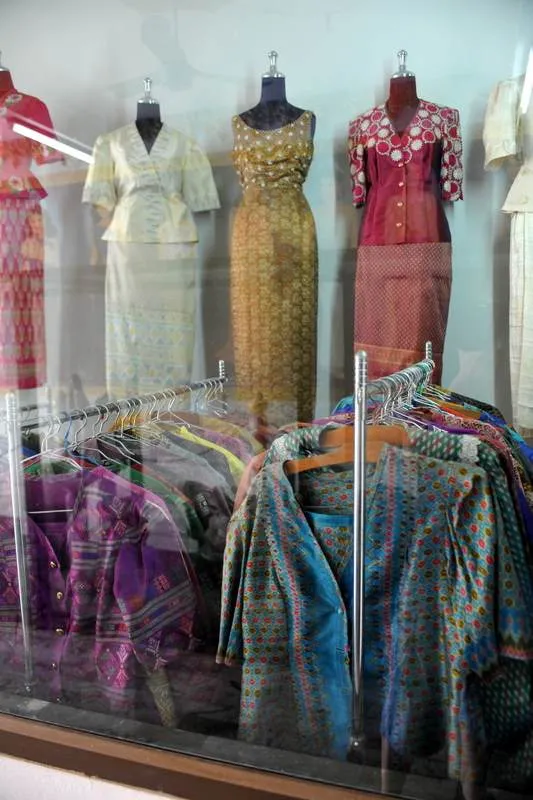
Let’s not forget about the costumes, of course — no idea where they came from or how they ended up here…
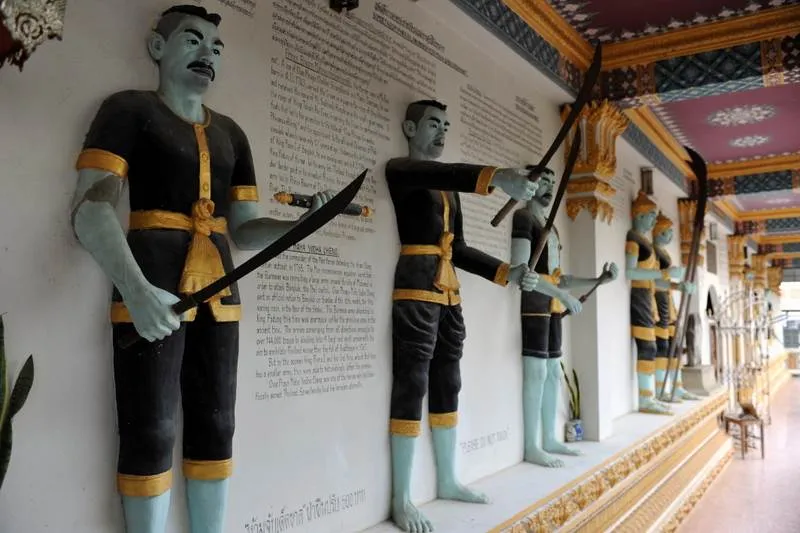
Some royalty of Thailand’s past, along with that nicely hand-written text — a much more patient person than I…
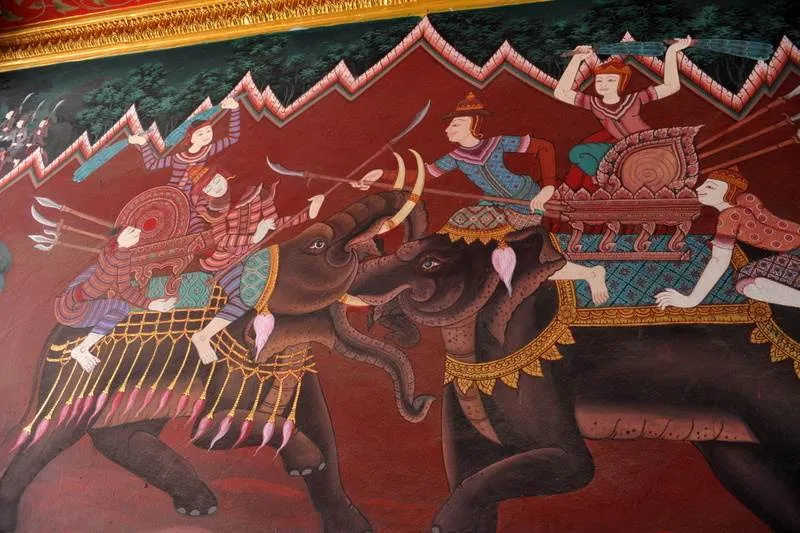 Some very large looks at the wars from centuries past — more than a few of these folks have smiles on their faces… Just a bit of artistic license, methinks….
Some very large looks at the wars from centuries past — more than a few of these folks have smiles on their faces… Just a bit of artistic license, methinks….
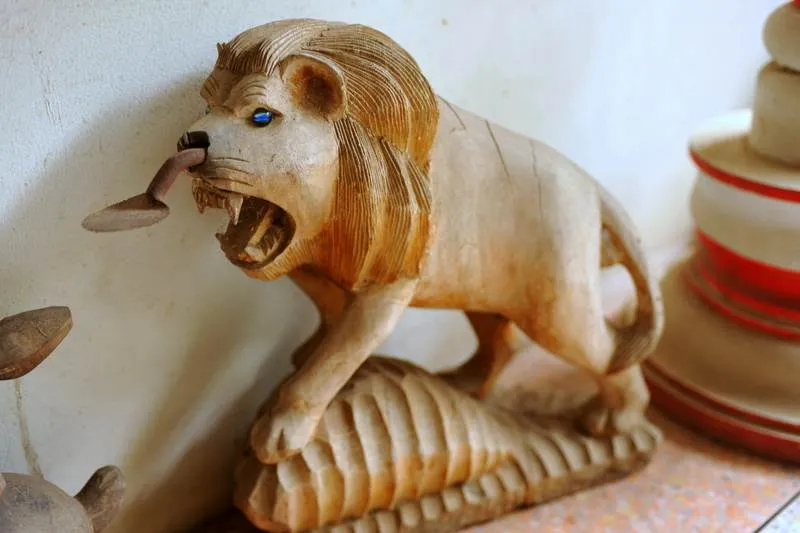
Coconut graters come in all shapes, sizes, and forms, though this is first one I’ve seen of a lion…
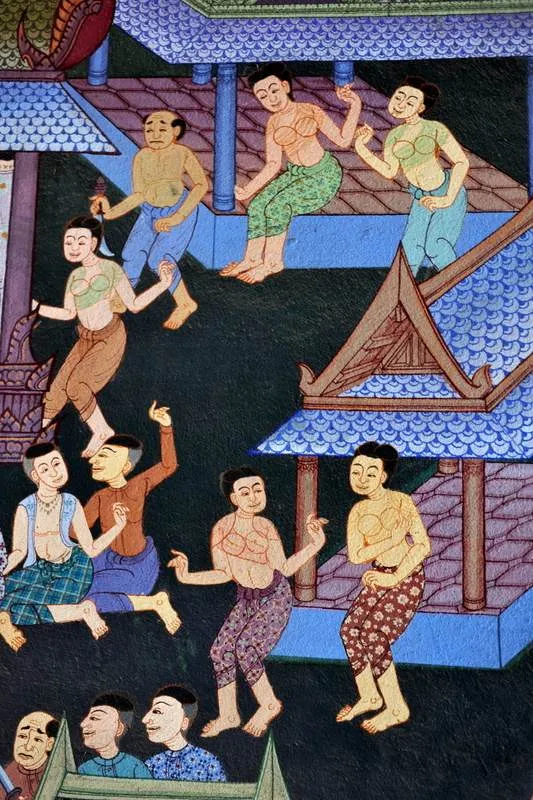
Why, hello, ladies…
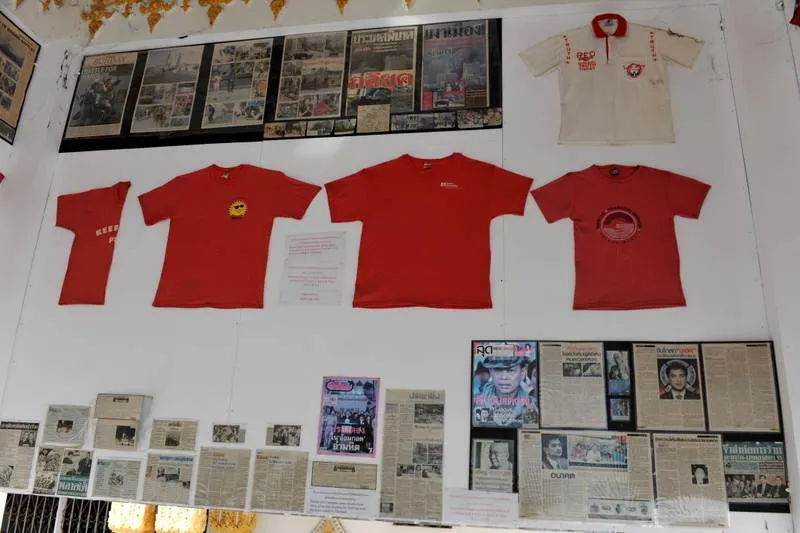
Stories and memento from Thailand’s Red Shirt riots in 2010.
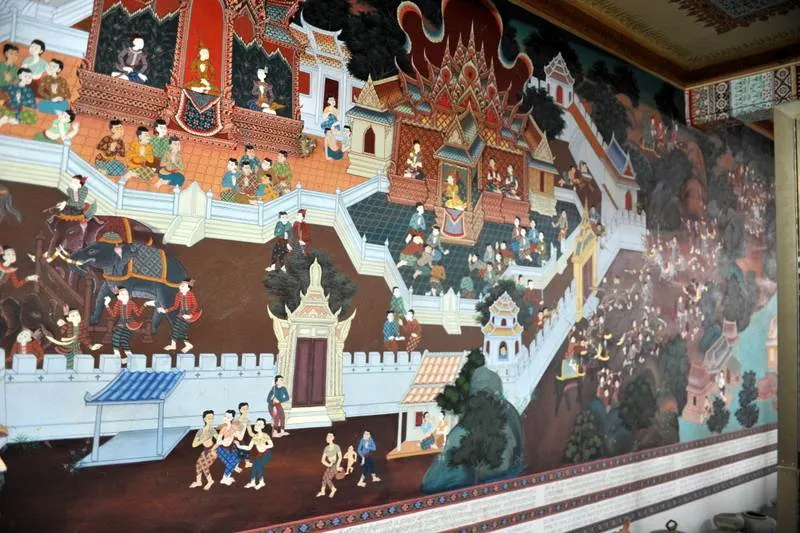
More portraits of royalty, anyone?
Don’t come here expecting to learn much — despite the amount of data around, the pictures only cover a tiny fraction of what there is to see. It’s dusty, unorganized, and in danger of decaying even further. That said, it’s an entertaining look at Thailand’s history, complete with unexpected curveballs and plenty of ‘what-the-heck?’ moments that have to be seen to be believed.
While you’re in Kanchanaburi, be sure to head to the most informative museum in town, the Death Railway Museum.
Name: the Bridge over the River Kwai and Kuang Im Shrine
Address: Maenamkwai Rd, Ban Tai, Mueang Kanchanaburi, Kanchanaburi 71000 (GPS: 14.041768,99.504485)
Directions: the Bridge is bike-able from Kanchanaburi’s main guesthoue / restaurant drag, Maenamkwai rd. Rent a bike, then ride about 3 kilometers (10–15 minutes); there’s plenty of places to lock up your bike.
Hours: unclear, but it’s an open area.
Admission: free
Phone: 1672 (Tourism Authority of Thailand)
Website: http://www.bridgeriverkwai.com/ (unofficial site)
Name: World War II war museum (AKA the fake JEATH War Museum)
Address: Maenamkwai Rd, Ban Tai, Mueang Kanchanaburi, Kanchanaburi 71000 (GPS: 14.041271,99.504646)
Directions: The museum (and bridge) are bikable from Kanchanaburi’s main guesthouse / restaurant drag, Maenamkwai rd. Rent a bicycle, then ride about 3 kilometers (10–15 minutes); there’s plenty of places to lock up your bike. Whether you’ve biked or tuk-tukked your way to the bridge over the Kwai river, double back slightly to the entrance of the plaza. The signs are around, but you’ll see a shopping area on your right. The entrance is inside the shopping area in the shade.
Hours: 8am-6:30pm
Admission: 40 baht
Phone: 1672 (Tourism Authority of Thailand)
Website: no website


